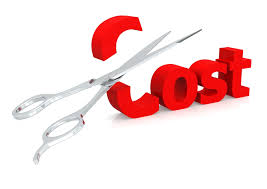One of the big secrets of multinationals is their constant striving to become the lowest cost producer in their field. These low costs feeds straight through to their bottom line, and is a technique that can also be used by small companies.
For businesses wanting to become a lowest cost producer, the stumbling block is often knowing how and where to work smarter to achieve their goals.
The aim is to be more efficient in order to widen the gap between the cost of production and the selling price of the goods or services and, and, by so doing, increase the profit margin.
A lower cost producer is also better placed to be more competitively priced, or price differentiated, in the market place.
Russ Davis, small business development specialist, emphasizes the need for businesses to review their cost drivers and pricing strategies regularly.
“Whether a manufacturer, service provider or retailer, businesses need to get a handle on what it costs to produce and deliver to their target market,” Davis said.
“You’d be surprised how many operations go on for several years without reviewing their costs, their prices are based on false assumptions that don’t take into account the increases in the cost of materials and services,” said Davis.
Judy Hartcher, business policy advisor, also stresses the importance of measuring costs to determine breakeven points on products and profitability.
When looking at costs, it was important to consider the processes applied as well as the inputs to the business.
Some of the key areas to consider when striving to become a low cost producer include overheads, inputs such as raw materials and components, outsourcing and other services, human resources, research and development, technology, and investment strategies, as well as consciously identifying core products and services.
It pays to shop-around and businesses are urged to obtain new quotes regularly, whether it be for raw materials, offices supplies, or the provision of basics such as telephone services and electricity.
Davis stressed the need to negotiate better prices for inputs into the business and to be on the lookout for alternative suppliers.
“It is amazing how low-cost businesses can become,” said Davis adding that the Internet and Yellow Pages are time-saving tools for shopping around.
Collective buying with other companies was an effective way to negotiate lower prices, Davis recommended.
Businesses are strongly advised to take a longer-term view on short-term decisions.
Often it is necessary to spend money to save money and time in the longer term. Smaller businesses are notoriously time poor and any time saved can be spent more productively within the business.
In terms of spending money, investment in new technology should not be put in the too-hard basket.
The application of new technology could be very basic yet effective, according to Davis.
He said a simple computerized spreadsheet, for example, would enable a business to develop a financial model in which they can factor in costs and easily identify changes.
Hartcher said prompt invoicing would help reduce the amount of capital tied up in outstanding accounts, also investing in a computerized system was a great time saver.
Hartcher added that the “old 80:20 rule” applied in terms of core products in that 80 percent of profit comes from 20 percent of customers.
“Less profitable products should be dropped unless they are of strategic value,” Hartcher advised.
Other ways of becoming a lowest cost producer include reducing manufacturing costs by standardizing product design, reducing waste, increasing the number of shifts so there is no down-time on equipment, minimizing the amount of re-tooling, and sub-leasing unused plant.
Flitman said it was important to balance the amount of fixed and variable costs. The higher the fixed costs, the greater the business risk and the greater the cost of financing, and the higher the risks during a downturn.
Outsourcing of certain services can help reduce fixed payroll costs, reduce the administrative burden and save on valuable employee time better directed on the operation itself.
Outsourcing can range from the use of courier companies through to regular book keeping and IT services, to involving recruitment firms in staffing appointments.
Many businesses find they are too busy to keep an eye on cutting costs. But for those that do, the benefits can be significant. Especially in times of great technological change, when new and cheaper processes may have been introduced which deliver significant cost savings.
Copyright 2002, RAN ONE Inc. All rights reserved. Reprinted with permission from www.ranone.com.

 Chris’ combination of academic credentials, career experience and temperament ideally suit his calling as a business development advisor. Clients say he has a mind for business and a heart for service.
Chris’ combination of academic credentials, career experience and temperament ideally suit his calling as a business development advisor. Clients say he has a mind for business and a heart for service.